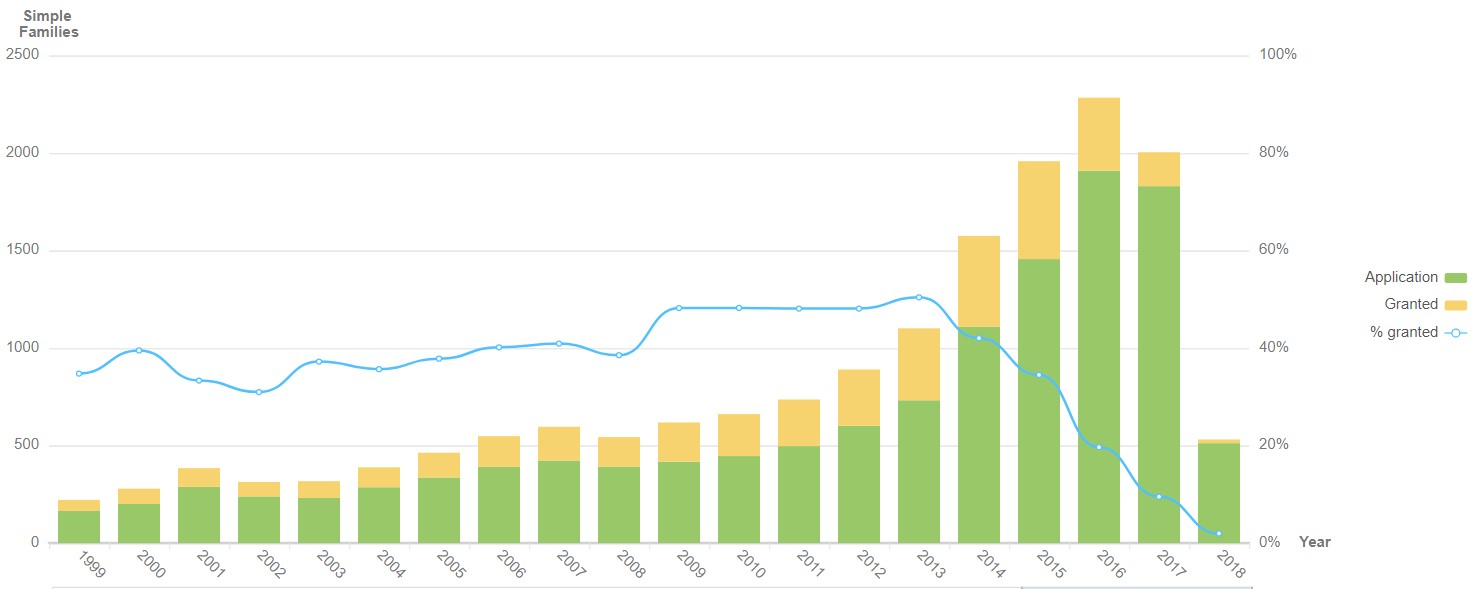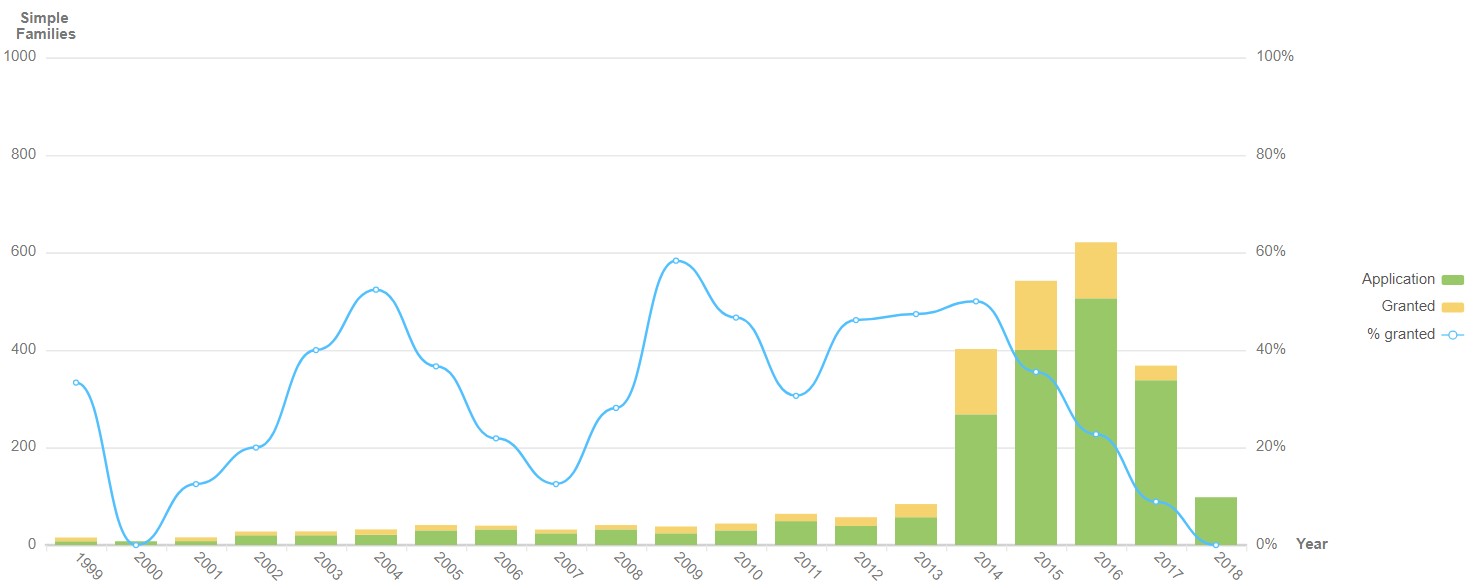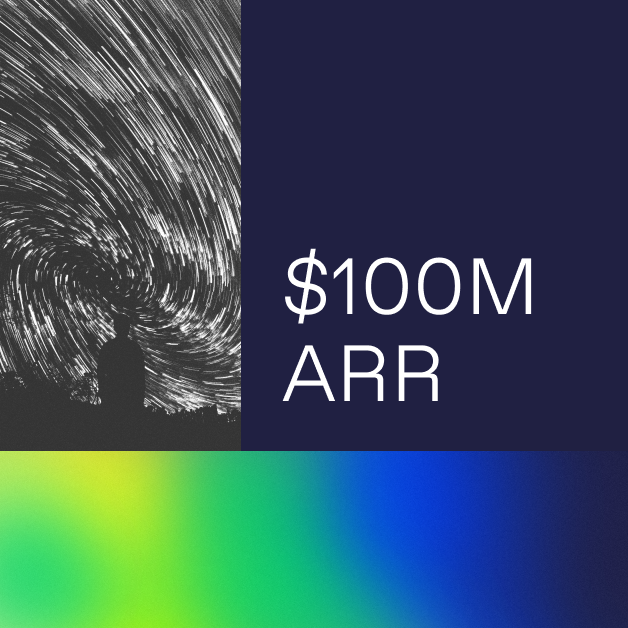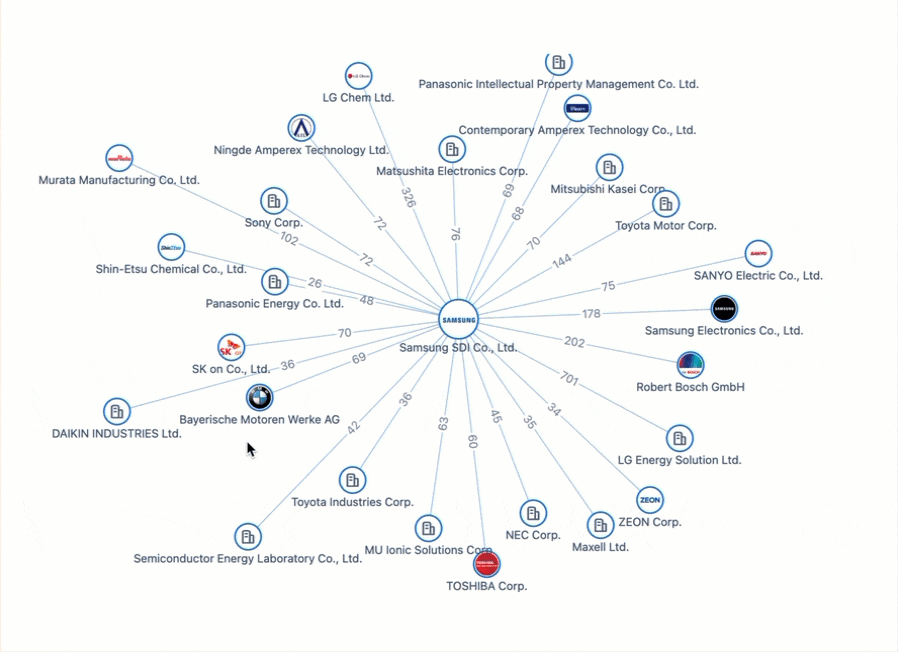Wearable air purifiers are the next Fitbit in health-tech, and Dyson will lead the way
A bold claim, given that most people have probably never heard of a wearable air purifier. But it is a claim backed up by the potent combination of patent data and a little bit of intuition.
Cast your mind back to 2016 – when everyone and their mother had a FitBit/Jawbone/Polar (other fitness trackers are available). People couldn’t get enough of walking, or more accurately, knowinghow much they’ve walked. Could patent data and a little bit of intuition have predicted this? Perhaps.
The figure below shows the annual patenting trend around fitness trackers begin to accelerate from 2012, with a large jump in patent filings in 2014.

How well does this patent filing data align with actual product launches?
Well:
- Jawbone launched its first fitness tracker (Jawbone Up) in November 2011. Jawbone’s first patent for a “BRACELET” was applied for in December 2011, and published in August 2012.
- Fitbit launched its first fitness tracker (Fitbit Flex) in May 2013. Fitbit’s first patent for a “wristband” was applied for in April 2013, and published in June 2014.
- Polar launched its first wristband fitness tracker (Polar Loop) in September 2013. Polar’s first patent for a “device for recording physical exercise” was applied for and published in June 2013.
Patent analysis however, is only one side of the story. Consumer preferences aligning with tech trends is the other. Predicting consumer tech trends is a notoriously difficult business, as Steve Ballmer’s 2007 prediction that “there’s no chance that the iPhone is going to get any significant market share” can attest to. (Apple took a record 51% of global smartphone market share in the final quarter of 2017.)
They do say hindsight is 20/20.
However, the signs were there, if you cared to look for them, for both the iPhone, and for wearable fitness trackers. In 2012, awareness began growing that “Physical Inactivity May Be as Deadly as Smoking”, that physical inactivity was a “silent killer”, and being a “couch potato is bad for you”. This growing awareness of a problem primed consumers in a way so that when a proposed solution (the wearable fitness tracker) came to market, many were ready to buy, wanting to avoid the ill-effects of inactivity.
Analysis of patent data can be a powerful tool when applied correctly. Indeed, in this case, combined with following broader health trends, it would have clearly identified the market trending towards wristband fitness trackers. Companies rely on patent data to gain a holistic view of the marketplace, facilitating more informed decision making.
So, what is the patent data saying about wearable air purifiers? What is a wearable air purifier anyways? And why am I saying they might just be “the next FitBit” in health-tech?
A wearable air purifier does exactly what it describes – it “purifies” the air you breathe and is wearable, like a combination of a necklace and a bracelet (Necklet? Bracelace?). There are only a couple of wearable air purifier products on the market right now, with the Airvida L1 notable for its good looks and being mentioned as a “must-see” at the 2017 Wearable Technology Show in London.
Airvida’s L1 wearable air purifier, appears in a patent, filed in March 2017 and published in April 2017, as “Air Purifiers”.

The patent data, in the graph below, shows a noticeable uptick in patenting activity from 2014.

Consumer awareness of air pollution has also been growing through 2018, with stories published on the link between air pollution and cognitive intelligence, air pollution and heart problems, air pollution and asthma, air pollution and dementia, the list could go on. The picture is clearly being painted that air pollution and health do not go together. With more than 54.5% of the world’s population living in cities, this is a problem faced on a global scale.
Air pollution is a problem.
Consumers are primed.
An exploration of this patent data, combined with a little bit of intuition, leads to the prediction that Dyson will be launching into this space shortly.
Firstly, as can be seen from above, patent data may align with product launches*.
Secondly, Dyson has a history of filing patents before launching products, as we have written about before in, “The dangers of failing to track your competitors’ R&D“. Dyson’s patent for its Supersonic hair dryer was published back in 2013 – it took three more years before the Dyson hair dryer was launched in a “shock move to the beauty industry”. More recently was the launch of Airwrap, announced on 10th October. The patent for “Hair Stylist” was published on 12th October 2018.
This background knowledge and the fact that Dyson has recently filed a patent protecting “A wearable air purifier”, suggests a product launch might be on the way. The patent was filed in July 2018 and published 5th September 2018. While there is precedent for Dyson filing for patents related to products and not releasing them (e.g. the Dyson toothbrush), could this wearable air purifier be the next “shock move”?
As Dyson continues to reinvent itself as an “air company”, and not simply “the vacuum company”, this potential product fits into the new strategic vision, while playing into the wider health-tech trend.
Based on this analysis, I predict that Dyson will release a wearable air purifier in the next 18-24 months, and that wearable air purification devices will be the next “big” health-tech trend.
Maybe you will be asking for one for Christmas 2020?
*This is only sometimes true. Most patented technologies are never commercialised or used in a product. However, while this may be true across the entire patent literature, the analysis presented here focuses on a handful of specific companies where this pattern does seem to hold.
Interested in getting more information via patent analysis?
Over 8,000 customers worldwide trust PatSnap’s patent data to help them make better R&D and investment decisions. Now we are making our trusted global datasets available programmatically–so you can easily add patent and legal data into your own applications and tools.
Your recommended content
-

Patsnap Surpasses US$100 Million in Annual Recurring Revenue
Category: Article | Category: News/PR
Wednesday, June 12, 2024
Patsnap has reached a significant milestone of achieving $100M in Annual Recurring Revenue (ARR), marking an impressive 20% year-over-year growth in 2023. This milestone highlights the massive and meaningful value our platform brings to over 12,000 IP and R&D teams across 50 countries, driving efficiency, productivity, and collaboration.
-

Introducing Hiro, an AI assistant built for IP and R&D workflows
Category: AI advancements | Category: AI development | Category: AI-tools | Category: Article | Category: artificial intelligence
Tuesday, May 14, 2024
Powered by Patsnap’s industry-specific LLM, Hiro is designed to streamline IP and R&D workflows from ideation to product launch. With its robust AI capabilities, Hiro brings a new level of efficiency, precision, and security to tasks that were once time-consuming and labor-intensive.What sets Hiro apart is that it draws from our large language model that’s been trained on market-leading patent records, academic papers, and proprietary innovation data. This ensures we deliver more accurate and reliable results for every prompt.
-

Powering the Future of Electric Vehicles: The Battle for Battery Innovation and Patents
Category: Article | Category: battery technology | Category: electric vehicle | Category: EV | Category: lithium ion | Category: lithium ion battery | Category: NEV | Category: new energy vehicles
Monday, April 22, 2024
In the ever-evolving landscape of innovation, the electric vehicle (EV) industry stands as a beacon of technological transformation. As we explore the patents propelling the EV revolution, Apple's venture serves as a poignant example of the challenges even industry giants face in this competitive arena. Join us on a journey through the global patent landscape, where the quest for superior power solutions unfolds, and where the true pioneers of the EV revolution are making their mark.